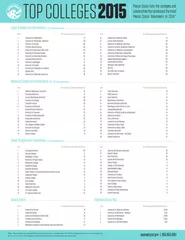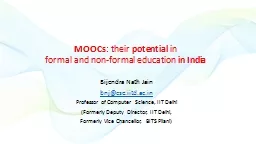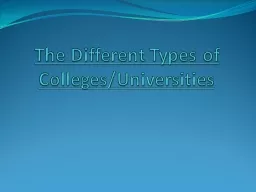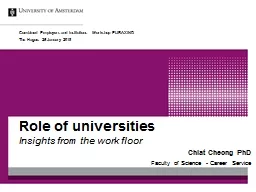PPT-The Role of Historically Black Colleges and Universities
Author : mitsue-stanley | Published Date : 2016-04-07
Institutional Pathways to the STEM PhD Among Black Students Rachel Upton PhD and Courtney Tanenbaum EdD American Institutes for Research AIR Overview Introduction
Presentation Embed Code
Download Presentation
Download Presentation The PPT/PDF document "The Role of Historically Black Colleges ..." is the property of its rightful owner. Permission is granted to download and print the materials on this website for personal, non-commercial use only, and to display it on your personal computer provided you do not modify the materials and that you retain all copyright notices contained in the materials. By downloading content from our website, you accept the terms of this agreement.
The Role of Historically Black Colleges and Universities: Transcript
Download Rules Of Document
"The Role of Historically Black Colleges and Universities"The content belongs to its owner. You may download and print it for personal use, without modification, and keep all copyright notices. By downloading, you agree to these terms.
Related Documents












![[EPUB] - Historically Black Colleges and Universities: A Reference Handbook (Contemporary](https://thumbs.docslides.com/907167/epub-historically-black-colleges-and-universities-a-reference-handbook-contemporary-education-issues.jpg)

